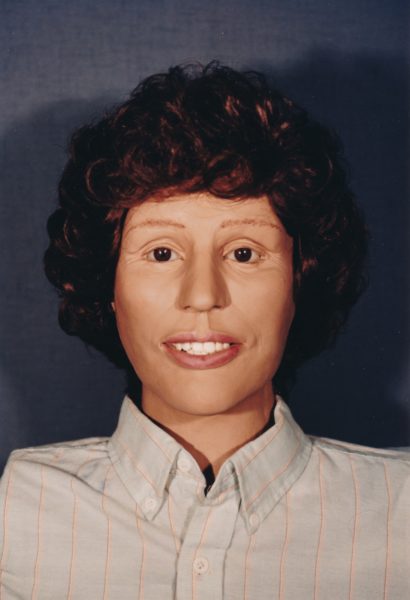One of the names that surfaced in the inquiry about the murder of Deb Wilson was that of Delwyn Jay Berkompas. Sheriff’s Detectives had interviewed him and he slung them a load. And they could prove it through others who would provide testimony not necessarily of the murder and the murder scene but contradicting other assertions Mr. Berkompas made.
So, he faced a prosecutor’s investigative subpoena and was charged with six counts of felony perjury…potentially a life offense for each in a murder case. Today I had time to go to the court clerk’s office and get the public records. (Thank you Case Records Technician Amy Rooks.) They tell much, but not all.
Among other things that he had told officers were:
“[T]hat he observed the following injuries to have been inflicted upon Deborah (sic) Lynn Wilson at the time of her murder; 1. One of her feet was severed; 2. One or more of her fingers were severed; 3. She had been disembowled and her intestines were exposed at the waist area[….]
“[T]hat Deborah (sic) Lynn Wilson and he engaged in a lengthy conversation, wherein she made numerous statement to him, after she had been mortally wounded[….]
“[T]hat the person the defendant has alleged to be the murderer, [REDACTED], suffered a significant cut on his forearm during the assault on Deborah (sic) Lynn Wilson[….]
“[T]hat he was in the company of Deborah (sic) Lynn Wilson and [REDACTED] when he first met [REDACTED], at [REDACTED]’s mother’s house back in 1980[….]
“[T]hat he drove past the murder scene at Deborah (sic) Lynn Wilson’s residence the morning following her murder ad observed Steve Crum (sic) and Jeff Kreun walk around[….]
“[T]hat a neighbor of Deborah (sic) Lynn Wilson, [REDACTED], arrived at the murder scene shortly after she died and spoke to the defendant before he left[….]
He put himself at the scene of the crime, tried to implicate someone else as the killer (for now I have redacted that person’s name and the name of two other persons), and made a bunch of other assertions that proved to be lies. So, facing six counts, each carrying the possibility of life imprisonment, Berkompas took a deal of some sort. That might–but doesn’t necessarily–mean that he actually had truthful testimony to offer. Or, he could just have been slinging stuff. For what reason? I don’t yet know. The agreement was subject “to appointment w/ vic. family to discuss plea offer. PA [prosecuting attorney] agrees to no incarceration and [defendant] agrees to five years probation.” That’s what transpired, along with mandatory substance abuse counseling and mental health treatment. Oh, and he had to pay $198 in costs and fines. The agreement was made Nov. 19, 2012.
As far as I know that is the only court record that deals with the murder of Debra Lynn Wilson.
And exactly how this ties to David Oudemolen is yet to be revealed–if it even does.Every complicated murder case I’ve studied has instances of false trails. And it’s not unheard of for someone to claim knowledge he doesn’t have. That can really make a case unnecessarily difficult. I have a call into Ottawa County Prosecutor Ron Franz. I expect that he will fill in some of the details and exactly how the case was closed out, something called “Exceptional Clearance.”
According to Section 7 of The Michigan Incident Crime Reporting (MICR) Uniform Crime Reporting Handbook There are only five reasons to close out a homicide case with anything other than an arrest:
Exceptional Clearance Codes
10 = Death of offender
11 = Prosecution declined (by the prosecutor for other than lack of probable cause)
12 = In Custody of Other Jurisdiction (Formerly Extradition Denied)
13 = Victim refused to cooperate (in the prosecution)
14 = Juvenile/no custody (the handling of a juvenile without taking him/her into custody, but rather by oral or written notice given to the parents or legal guardian in a case involving a minor offense).
Code 10 applies to this case, but that’s only after all the elements of the crime have been satisfied:
The following four conditions must be met to exceptionally clear an offense:
The investigation must have clearly and definitely established the identity of at least one
offender.
Sufficient probable cause must have been developed to support the arrest, charging, and prosecution of the offender.
The exact location of the offender must be known so that an arrest could be made.
There must be a reason outside the control of law enforcement which prevents the arrest.
This case was closed out, not in a court of law but in the prosecutor’s office, so records of the final disposition are not readiy available. But they have to exist.
